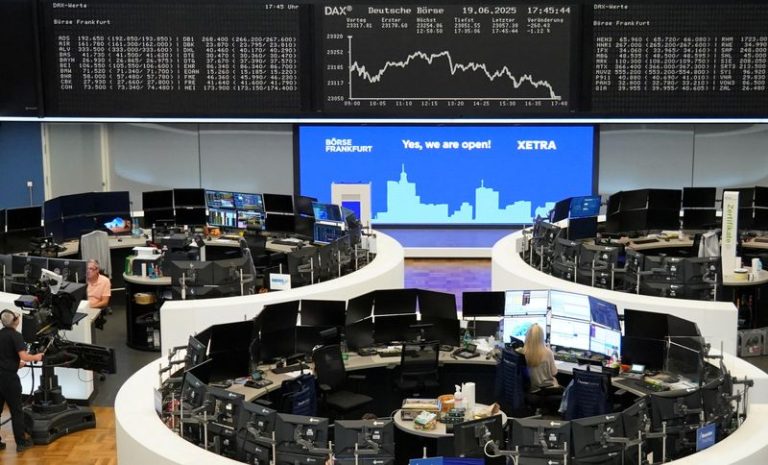What are the trends that you are picking up in the real estate space at this point in time? I do not want to specifically talk about Mumbai. No doubt, it has clocked the best April in about 13 years, but what is your take when you talk about pan-India demand trends right now?
Gulam Zia: It is a mixed bag. We are absolutely right when we are focusing on Mumbai, a lot of other details or numbers are hidden because Mumbai has been a great market, great movement, etc. But while Mumbai is showing a great performance, even Pune is doing very well. In fact, at the end of the March quarter, we realised that Pune was one of the better performing markets amongst the top seven or eight cities.
But that said, for every Pune and Mumbai, other markets like NCR are not doing as well. On the other hand, even Bengaluru is showing signs of concern. So, while at the macro level, people are talking about the residential market showing signs of fatigue. A few of these markets are the reason behind it, whether it is NCR or Bengaluru, even Hyderabad market which was performing superlatively well in the last year or two, has started showing some slowing down in numbers. But when you look at Maharashtra, the western side, especially Mumbai and Pune, these numbers are covering up a lot of other things happening in India.
So, there are some signs of concerns overall, but I would say if I have to talk about the last seven or eight quarters of rolling averages, nothing to worry about. It is only just about the last one or two quarters which have started showing some signs of slowing down in a few markets.
I keep on hearing these crazy numbers about a house in Mumbai getting sold at Rs 1,50,000 a square feet, Rs 2,50,000 a square feet. What is the last number you heard? I first want to understand from you, then I will ask you my question.
Gulam Zia: No, I do not think we have reached anywhere close to Rs 250,000; crossing Rs 200,000 is what is the new norm that has come about and…
Rs 200,000 per square feet transactions going on in Munbai?
Gulam Zia: Exactly and I am talking about primary transactions, with developers selling at Rs 2,00,000. When secondary sales happen, you can actually have lots of concerns whether some side transaction or something. But when a developer is selling and it is registered, we have to take it with some seriousness. Rs 200,000 is the new norm as far as the Mumbai residential market is concerned.How many actual buyers? I am not even talking about investors. What about the affordability of Mumbai real estate prices? There is construction going on everywhere.
Gulam Zia: Well, you are absolutely right. Affordability is a concern. It has been rising gradually in the last two or three quarters and especially in markets like Mumbai and, even in Gurugram, where a few of these projects are again breaking the ceiling. A few of these transactions are raising concerns on affordability. However, when we are talking about affordability, it is also a very contrasting situation. Mumbai may be selling apartments at Rs 200,000 per square feet, but the same Mumbai also has amongst the top eight cities the maximum number of below Rs 50 lakh apartments being sold. Affordability-wise as well and with Mumbai infrastructure improving, a lot of new areas are emerging, and affordability is intact in those areas. In fact, the affordable housing market itself is suffering for whatever reasons but not much inventory is coming because every developer is focusing on the upper end where the low hanging fruit, the high velocity, high value transactions, and margins are much higher.
So, the lower end of the market is suffering big time and that is where concern is emerging. But affordable real estate is also breaching the ceiling and in the next quarter or two, we will see some fatigue coming in. But as far as price rise is concerned, it is already hitting the ceiling.
Post Covid, we saw markets like Hyderabad, Gurugram, see a huge boom in the way the construction activity was going on. What is your take? Have they peaked out right now?
Gulam Zia: Yes, and the two specific markets you spoke about – Hyderabad and Delhi – have very different demand drivers. Hyderabad is driven by technology. All kinds of IT, GCCs, etc, are driving that market. Whereas Delhi NCR is a very different market from the boom that we have recently seen where some developers are talking about selling every apartment above at above Rs 100 crore plus. That is a slightly different market where a lot of South Delhi and Central Delhi residents are shifting to Gurugram for a better lifestyle.
So that is a slightly different market. But that said, these two markets have already started showing signs of fatigue. Price rise is over; in Bengaluru, Delhi, and Hyderabad markets are seemingly slowing down. Bengaluru did have a huge price rise about 9-10 odd percent but the velocity of sale is already suffering. So, wherever the price rise is breaching a certain affordability mark, we will see a slowing down in the transaction numbers coming about and which is what Bengaluru is already showing.
Do you see demand plateauing first or do you see pricing plateauing first or do you see both happening or none happening? It is like an objective type question A, B, C, or D.
Gulam Zia: Very difficult. Do I have a phone-a-friend facility?
No, objective type. This time you are sitting inside the hall without any paper or access to Google. You have to tick a box. You do not have option E, none of the following.
Gulam Zia: In order to reach a sensible level, the price rise has to hit the ceiling first and that is already happening. Transactions are still going on in one market or the other because not every developer takes the price up to that level. First, the upper end developers take a 0-15% premium on the rest of the market, it does not slow down the whole market. But when that segment of market starts showing some ceiling of price rise not increasing, then gradually other developers also realise, the sellers also realise and that is when the concern starts jacking up because the buyers then feel that if the prices have plateaued I would not buy it today, I will buy tomorrow.
Today most of the buyers are rushing in to buy because they believe that the prices will go up tomorrow. When that plateau reaches, the buyer must also start thinking that he should buy tomorrow and wait for the price correction to come about. Right now, that is nowhere in sight. We want to believe that first the price rise will reach that plateau and then we shall see the rest of the market changing.
We have spoken so much about demand, the pricing, but there is a consumer angle in all of this and given that the interest rate cuts are coming in, and the transition we are seeing has hit a lot of the home loan guys. So, what is your take? Is this a huge deciding factor when someone goes ahead and buys a home right now or is the pricing so exorbitant that everyone is just taking it too easy?
Gulam Zia: Not really. The dynamics are pretty different in different markets, but on average, with the interest rate regime also changing, we see a silver lining there and especially for the mid to lower end of the market which was suffering for at least three years. Post Covid, all of us were talking about the upper end shooting up; that has happened but at the cost of the affordable housing market, mid to lower end of the market and that is now coming up with interest rates coming down, that was one market, that was one segment of the market which is hugely dependent on interest rates and with that changing, we want to believe that in the next year-and-a-half, we shall see a lot of softening of interest rate and the impact on home loans.
That is expected to bring affordable housing back on track and let us not also forget that the Pradhan Mantri Awas Yojana 2.0, launched in October ‘24, is yet to show its true colours. We want to believe that these two things coming about discounts and concessions, etc, coming in because of Pradhan Mantri Awas Yojana 2.0 and softening interest rates, – with these two things coming together, we shall see the mid to lower end of the market coming back on track. At that time, the upper end of the market may start slowing down. We will have a lot to cheer about because then the mid to lower end of the market will start bouncing back.
I want to believe for at least the next two to three years, those developers who are balancing their products and are balancing their categories very smartly, will not have much to worry about.
Where are the Rs 2,00,000 per square feet deals happening? Which building?
Gulam Zia: This is a new location that we always used to think about in south Mumbai. But this time, it is Worli Sea Face. Worli Sea Face is the new market to look at with the coastal road impact coming about, the whole of Worli Sea Face is today talking about a lot of new developments without taking specific names here, there are one or two such projects which are breaching the Rs 200,000 per square feet market.







